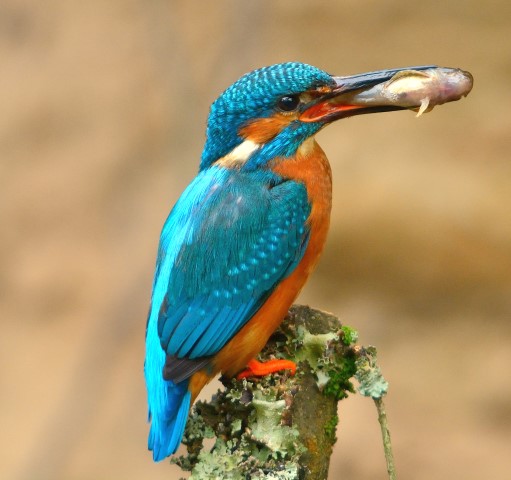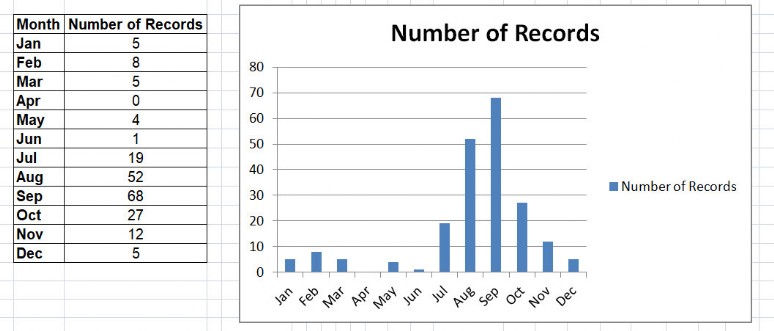More on Kingfisher on Arran
Reports

September 2019 was an outstanding month for Kingfisher. There were eleven records from six wide-spread locations including areas where it is not normally recorded. Only one of the records was for more than one bird and that was a report of two on the Rosa Burn on 13th. This encouraged me to look at the Arran Kingfisher records over the last ten years to see if I could get some insights into when and where Kingfisher are seen on Arran.
Over the last ten years there have been two hundred and six records of Kingfisher on Arran. One hundred and ninety-eight of these were of single birds and only on eight occasions were two birds seen. The chart below shows all the records plotted against month of the year. With more than seventy percent of the records in August/September/ October and virtually none in the breeding season, this would suggest that the sightings on Arran are birds dispersing from elsewhere after the breeding season. There have been no confirmed records of Kingfisher breeding on Arran. Looking at the number of sightings each year, there is no obvious pattern. For example while there were no records from 2016, there were eighty-two for 2017. The number of sightings each year may reflect the success or otherwise of breeding elsewhere. The better the breeding season, the more birds there are dispersing and the more sightings there are on Arran.

The second chart plots the records from the last ten years against locations on Arran. While the records are quite widespread, the vast majority of the records, over eighty percent, are from the north end of Brodick Bay around the Rosa and Cloy Burns, Fisherman's Walk and Cladach.

This starling sized bird is often unobtrusive despite its bright colours, and often all that is seen is a glimpse of a bright blue back flying off over water. On the other hand this shy bird can allow really close clear views, if you are patient.
In Scotland, the Kingfisher is a localised breeder found mostly in the south and west mainland. The range of this species is from the British Isles and Scandinavia east across central Europe to the Urals and the Caspian Sea. Populations in the north and east undertake long distance migrations to winter in southern Europe and North Africa, but birds further west and south are either sedentary or short distance migrants. The nearest breeding population to Arran is to the east in North Ayrshire.
Wherever the birds on Arran come from their presence brightens any day.